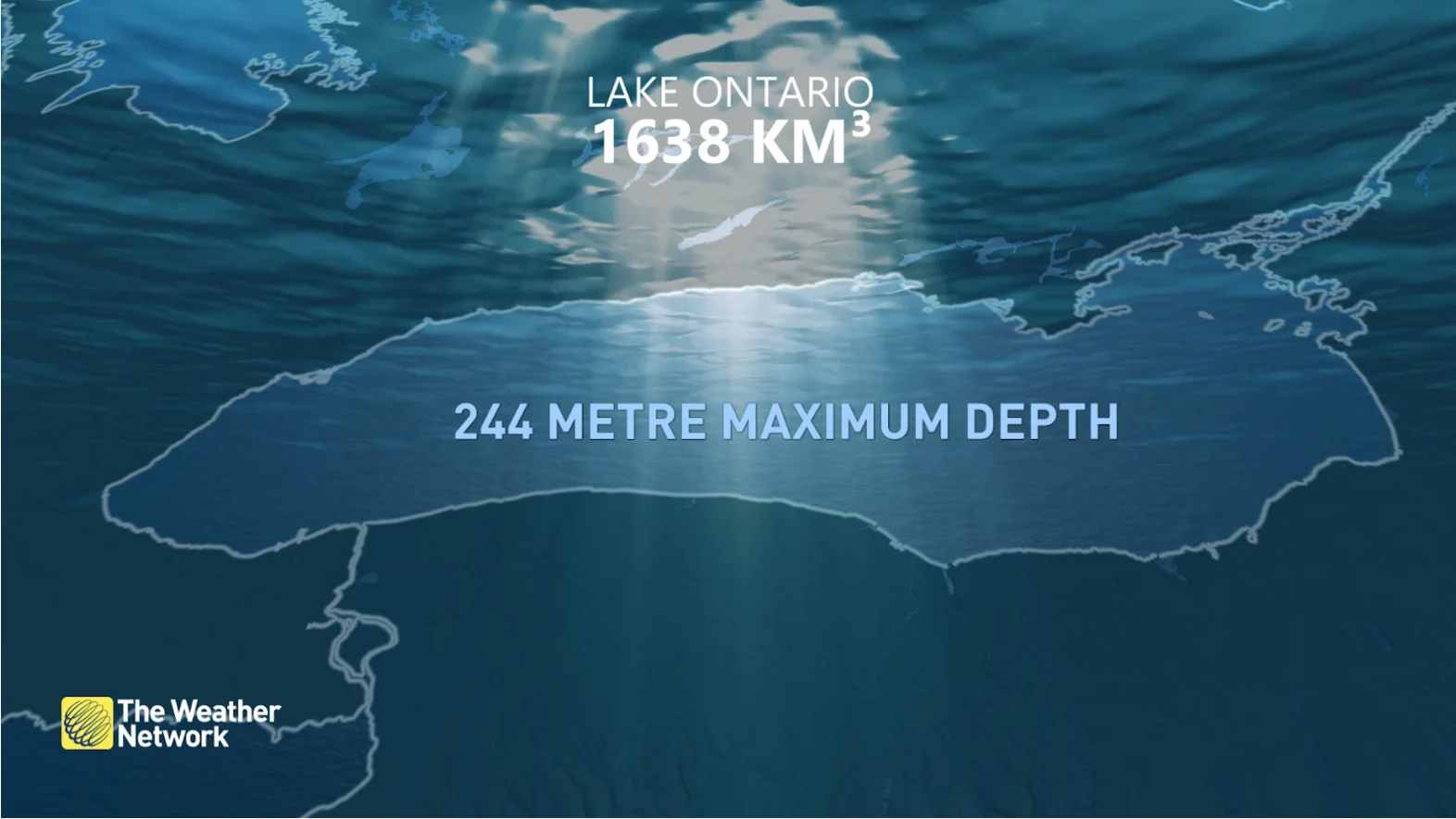-
Coastal B.C.: 50–80 cm → 65 cm
-
Interior B.C.: 100–200 cm → 150 cm
-
B.C./Alberta Mountains: 500–1200 cm → 600 cm
-
Prairies: 100–150 cm → 125 cm
-
Ontario: 120–300 cm → 210 cm
-
Quebec: 200–300 cm → 250 cm
-
Atlantic Canada: 300 cm (fixed)
3. Converting snowfall to water
Snowfall depth is useful, but to calculate weight we’ll use what’s known as the snow-to-water ratio. As a crude average, 10:1 is the estimate we’ll use.
Using the standard 10:1 snow-to-water ratio (10 cm of snow = 1 cm of water), we converted snowfall depths into water equivalents. This metric can vary wildly across Canada, from 5:1 to over 40:1, depending on the temperature.
4. Calculating water volume
Water volume was calculated for each region: Volume (m³) = Snowfall (m) x Land Area (m²)
To give you an idea of how much water this would be, consider this. If we drained Lake Ontario at the start of the year, it would be nearly full of our melted snow by the end. It’s enough water that each Canadian could be given 64 million water bottles. Do you have enough room in your fridge?

5. Weight of snow
Here’s where things get heavy. We’re going to be using numbers so astronomically large, they lose meaning. We’ll try to make it more relatable.
We multiplied the water volume by the density of water (1,000 kg/m³) to calculate the weight of snow: Weight (kg) = Volume (m³) x 1,000
Finally, we converted kilograms into metric tons by dividing by 1 million.
Regional Breakdown (in billion metric tons):

